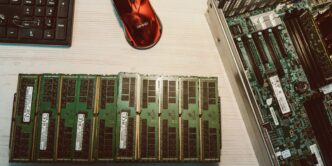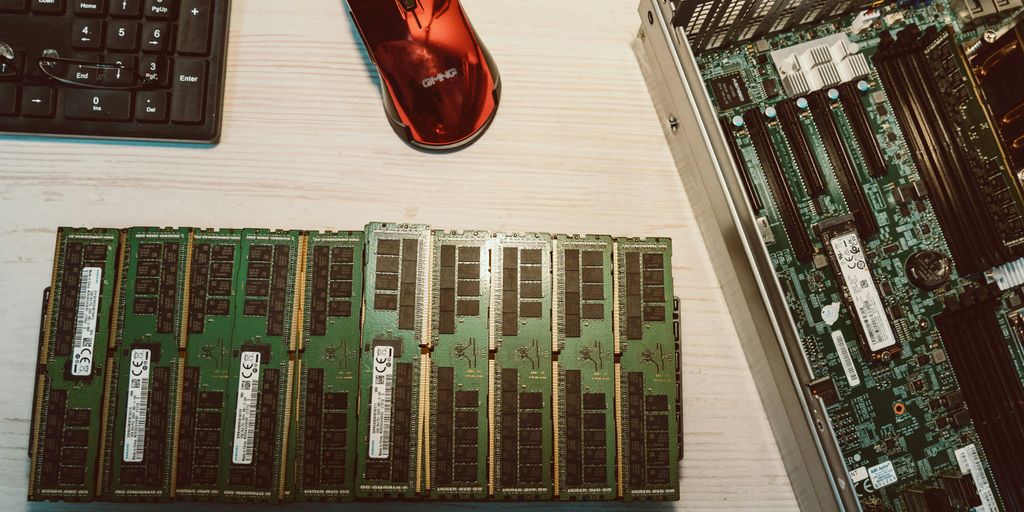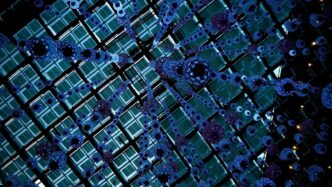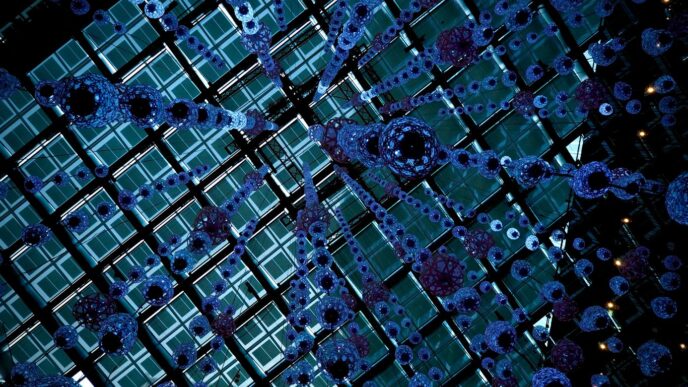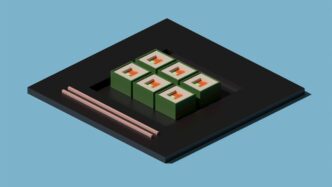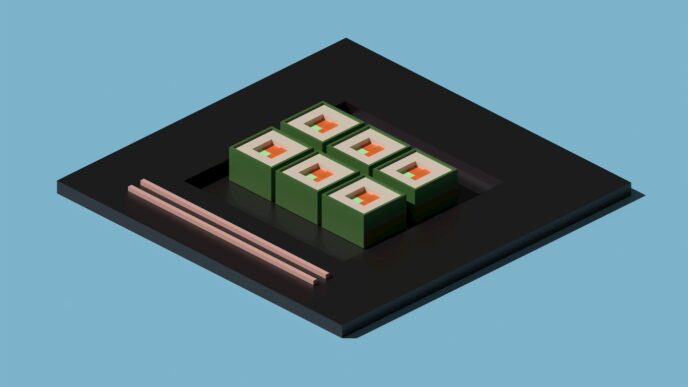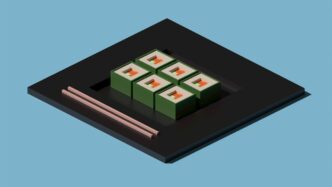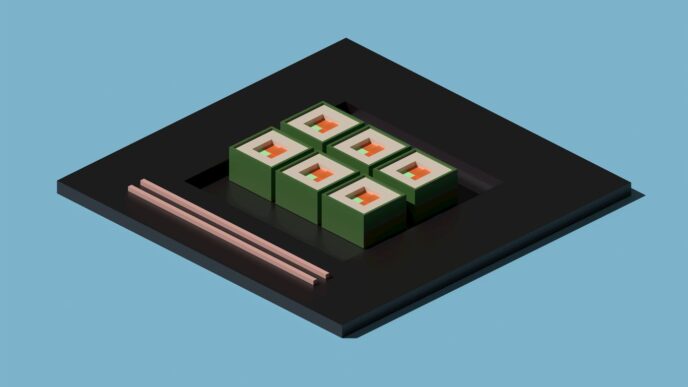I’ve been curious about quantum computer vs supercomputer speed and what that really means for us. You hear about qubits tackling huge problems in seconds, while supercomputers grind away for days. It’s confusing: each side uses different measures, faces unique limits, and shines on its own tasks. Let’s break down how both stacks match up now and where they’re heading.
Key Takeaways
- Supercomputers track their speed by how many calculations they do each second, while quantum computers count qubit operations that cover many states at once.
- Supercomputers handle big simulations and data tasks well, but quantum machines shine on certain problems like factoring or optimization.
- Quantum computer vs supercomputer speed is still limited by qubit errors, cooling systems, and power needs in real-world use.
- New milestones like the first exascale supercomputer and quantum supremacy tests show each side’s progress.
- Mixing quantum and classical systems into hybrid setups may give both speed and flexibility for future computing tasks.
Speed Fundamentals in Quantum Computer vs Supercomputer Speed

Measuring Computational Throughput
Okay, so when we talk about speed, we’re really talking about how much work these machines can get done. For supercomputers, it’s all about FLOPS – floating-point operations per second. Think of it like this: how many calculations can it crunch through in a second? Supercomputers are powerhouses, hitting quadrillions of calculations per second. That’s a lot! But with quantum computers, it’s different. We’re not just counting operations; we’re looking at how quickly they can solve problems that are too hard for regular computers. It’s less about raw speed and more about efficiency in tackling specific, complex problems. The way quantum computers process information gives them their incredible speed and computational power.
Limits of Qubit Operations
Qubits are the basic unit of information in a quantum computer, like bits in a regular computer, but way more complex. The thing is, qubits are super sensitive. They need to be kept cold – like, colder than outer space cold – and shielded from any interference. This makes working with them tricky. The more qubits you have, the harder it is to keep them stable and working together. Error correction is a huge deal in quantum computing. We need to find ways to fix errors that pop up because qubits are so fragile. This is a big limit on how fast and how well quantum computers can work. It’s like trying to build a house of cards in a hurricane – you need to be really careful and have ways to protect it.
Evolution of Floating-Point Performance
Supercomputers have been around for a while, and they’ve gotten seriously fast. Every year, they get better at doing floating-point calculations, which are used in all sorts of scientific simulations and engineering tasks. We’re talking about a steady climb in performance, thanks to better processors, more memory, and smarter ways of connecting everything together. Quantum computers are still pretty new, so they haven’t had the same kind of evolution. But the potential is there for them to leapfrog supercomputers in certain areas. It’s like comparing a seasoned marathon runner to a sprinter who’s just starting to train – the marathon runner is consistent, but the sprinter might have bursts of incredible speed. The quantum chip Willow shows its best performance on speed tests.
Architectural Contrasts Driving Speed Differences
It’s not just about raw processing power; the fundamental way supercomputers and quantum computers are built and operate leads to huge speed differences. Think of it like comparing a fleet of delivery trucks to a teleportation device – both get packages from point A to point B, but the method and potential speed are worlds apart.
Classical Parallel Processing
Supercomputers achieve their impressive speeds through parallel processing. This means breaking down a big problem into smaller chunks and assigning those chunks to many processors that work simultaneously. It’s like having a team of people working on different parts of a puzzle at the same time. The more processors, the faster the puzzle gets solved… up to a point. There are diminishing returns, and some problems just don’t break down nicely for parallel processing. This is where the limits of classical computing start to show.
Quantum Superposition Advantage
Quantum computers, on the other hand, use qubits. Unlike classical bits that are either 0 or 1, qubits can exist in a state of superposition, meaning they can be 0, 1, or both at the same time. This allows a quantum computer to explore many possibilities simultaneously, making it incredibly powerful for certain types of calculations. Imagine trying to find the exit to a maze. A classical computer would try each path one by one. A quantum computer, thanks to superposition, could explore all paths at once. This is a simplified analogy, but it captures the essence of the quantum advantage.
Role of Quantum Entanglement
Entanglement is another key quantum phenomenon. When qubits are entangled, their fates are linked, no matter how far apart they are. Measuring the state of one entangled qubit instantly tells you the state of the other. This allows for complex correlations and computations that are impossible for classical computers. It’s like having a team where each member instantly knows what the others are doing, allowing for incredibly coordinated and efficient problem-solving. This interconnectedness is what allows quantum computers to tackle problems that are intractable for even the most powerful supercomputers. The interplay between superposition and quantum entanglement is what gives quantum computers their potential for exponential speedups in specific areas.
Benchmarking Breakthroughs in Speed Comparison

It’s time to talk about how we actually measure the progress of both quantum computers and supercomputers. It’s not enough to just say one is "faster" than the other; we need concrete benchmarks and milestones to track their development.
Exascale Milestones in Supercomputing
Supercomputing has hit some serious milestones recently, most notably the achievement of exascale computing. An exascale computer can perform a quintillion calculations per second, which is a huge deal. Think about the simulations we can run now! We’re talking climate modeling, drug discovery, and materials science at a level of detail never before possible. These machines are pushing the limits of classical computing, and it’s exciting to see what they can do. But, they also consume a ton of power and take up a lot of space. Here’s a quick look at some key supercomputers:
| Supercomputer | Location | Peak Performance (HPL) |
|---|---|---|
| Frontier | USA | 1.194 EFlop/s |
| Fugaku | Japan | 0.442 EFlop/s |
| LUMI | Finland | 0.309 EFlop/s |
Landmarks in Quantum Supremacy
Quantum supremacy is when a quantum computer can solve a specific problem that no classical computer can solve in a reasonable amount of time. It’s a bit of a controversial topic, because the problems are often very specific and not necessarily useful in the real world. But, it’s still an important milestone. For example, there was a recent applied-physics breakthrough that showed a quantum system using far less power while being much faster. Google claimed quantum supremacy a few years ago, and IBM has also made significant strides. The race is on to build more stable and powerful quantum computers that can tackle real-world problems.
Developing Performance Benchmarks
Creating good benchmarks for quantum computers is tough. Classical benchmarks don’t always translate well, because quantum computers work in a fundamentally different way. We need new benchmarks that can accurately measure the performance of quantum algorithms. Some areas of focus include:
- Quantum Volume: Measures the size and connectivity of a quantum circuit that can be successfully run.
- Algorithm-Specific Benchmarks: Testing performance on specific algorithms like Shor’s algorithm or Grover’s algorithm.
- Application-Oriented Benchmarks: Focusing on problems that are relevant to real-world applications, such as materials discovery or financial modeling.
It’s an ongoing process, but developing these benchmarks is key to understanding the true potential of quantum computing and comparing it to supercomputing.
Use Cases Highlighting Speed Advantages
Quantum computers aren’t just about theoretical speed; they’re about solving real problems faster. While your everyday tasks like browsing the web will still be faster on a regular computer, there are specific areas where quantum computers could really shine. Let’s look at some of those.
Cryptography and Speed Tradeoffs
Cryptography is a big one. Current encryption methods rely on the difficulty of factoring very large numbers. Quantum computers, using Shor’s algorithm, could theoretically break these encryptions much faster than any classical computer. This has huge implications for data security. The speed advantage here isn’t just incremental; it’s potentially game-changing.
However, it’s not a simple win. Developing quantum-resistant cryptography is also advancing. So, it’s a race between breaking codes and creating new, unbreakable ones. The speed advantage in cryptography will depend on which side advances faster.
Accelerating Scientific Simulations
Simulating complex systems, like molecules or materials, is incredibly demanding for classical computers. Quantum computers, however, are naturally suited to simulate quantum systems. This could revolutionize fields like drug discovery and materials science. Imagine designing new drugs or materials with properties we can only dream of today, all thanks to faster simulations. For example, simulating molecular interactions to design new catalysts could take years on a supercomputer but potentially only weeks on a quantum computer. This is where quantum processors can really make a difference.
Optimizing Logistics Algorithms
Think about optimizing delivery routes for a massive logistics company. The number of possible routes explodes as the number of delivery points increases. Classical computers struggle to find the absolute best solution in a reasonable time. Quantum computers, with their ability to explore many possibilities at once, could potentially find near-optimal solutions much faster. This could lead to significant cost savings and efficiency gains. Here’s a simplified example:
- Classical Approach: Tries a limited number of route combinations, settling for a ‘good enough’ solution.
- Quantum Approach: Explores a much larger set of route combinations, getting closer to the best solution.
- Result: Faster, more efficient delivery routes, reduced fuel consumption, and happier customers.
Here’s a table illustrating the potential impact:
| Scenario | Classical Time | Quantum Time | Improvement |
|---|---|---|---|
| Route Optimization | 1 week | 1 day | 85% |
| Supply Chain | 1 month | 1 week | 75% |
| Resource Allocation | 2 weeks | 2 days | 85% |
Technical Challenges Affecting Real-World Performance
Error Rates and Qubit Stability
Okay, so quantum computers are supposed to be super fast, right? But here’s the thing: they’re also super sensitive. Qubits, the basic units of quantum information, are incredibly fragile. Any little disturbance – a vibration, a temperature change – can mess them up. This is called decoherence, and it basically means the qubits lose their quantum properties, leading to errors in calculations. Quantum error correction is being developed, but it’s still a major hurdle. Think of it like trying to build a house of cards during an earthquake – tough, right?
Cooling Infrastructure Demands
Another big problem is keeping these quantum computers cold. Like, really cold. We’re talking colder than outer space. This requires some serious cooling equipment, which makes the computers huge and power-hungry. It’s not like sticking a regular fan on your CPU; we need specialized refrigerators called dilution refrigerators. These things are expensive to buy and run, and they add a lot to the overall cost of quantum computing. Plus, all that energy consumption isn’t exactly great for the environment. It’s a bit of a catch-22: we need a lot of power to potentially solve problems that could help with energy efficiency.
Energy Efficiency Constraints
Speaking of energy, that’s a huge issue. Supercomputers already suck up a ton of electricity, but quantum computers could be even worse, at least for now. The cooling requirements alone are a massive drain. And while some claim quantum computing has the potential to run machine-learning algorithms with 25 times less electricity, we’re not there yet. The race is on to find ways to make quantum computers more energy-efficient, but it’s a tough challenge. We need breakthroughs in both hardware and software to really make a difference. It’s not just about speed; it’s about being able to do useful calculations without melting the planet.
Emerging Integrations for Enhanced Throughput
The future isn’t about quantum versus classical; it’s about quantum and classical working together. We’re seeing some really interesting stuff happening as researchers and engineers figure out how to combine the strengths of both types of computers. It’s not just about building bigger, better quantum computers, but also about smarter ways to use the resources we already have. Let’s take a look at some of the ways this is playing out.
Hybrid Quantum-Classical Architectures
The most promising path forward involves hybrid systems where quantum processors handle specific tasks they excel at, while classical computers manage the rest. Think of it like this: your quantum computer is a specialized co-processor, like a GPU, but for quantum calculations. The classical computer handles data preparation, error correction, and result interpretation. This approach lets us use existing classical infrastructure while gradually integrating quantum capabilities. For example, Quantinuum’s Reimei is a quantum computer that is now fully operational at RIKEN, ushering in a new era of hybrid quantum/high-performance computing.
Quantum Co-Processing Integration
Instead of building entirely new systems from scratch, another approach is to integrate quantum processors as co-processors within existing supercomputer architectures. This means adapting current software and hardware to work with quantum units. It’s a bit like adding a new type of accelerator to a supercomputer. This approach requires careful consideration of data transfer rates, latency, and how to effectively partition problems between the classical and quantum components. It also means figuring out how to program these hybrid systems, which is a challenge in itself. The goal is to make quantum power accessible to a wider range of users without requiring them to completely overhaul their existing infrastructure. This could involve things like:
- Developing new programming languages and tools.
- Creating standardized interfaces for quantum co-processors.
- Optimizing data transfer between classical and quantum systems.
Next-Generation Supercomputer Designs
Supercomputer design is also evolving to better accommodate quantum integration. This includes things like:
- Developing specialized cooling systems to handle the extreme temperature requirements of some quantum computers.
- Creating low-latency interconnects to minimize communication bottlenecks between classical and quantum processors.
- Designing software architectures that can efficiently manage hybrid workloads.
Ultimately, the goal is to create a seamless environment where researchers can easily harness the power of both classical and quantum computing to solve the world’s most challenging problems. It’s a complex undertaking, but the potential rewards are enormous. The future of flexible IT may depend on it.
Future Prospects in Quantum Computer vs Supercomputer Speed
Quantum Acceleration Roadmaps
Okay, so where are we headed? The future isn’t about one machine ruling them all. It’s more like a tag team. We’re talking about quantum computers getting faster, sure, but also about figuring out exactly what they should be doing. Quantum acceleration roadmaps quantum algorithms are basically the GPS for this journey. They outline the steps needed to make quantum computers useful, like improving qubit stability and reducing errors. Think of it as plotting the course for quantum computers to actually start solving problems that supercomputers can’t touch. It’s not just about speed; it’s about figuring out the right problems to solve.
Scaling Classical Compute Cores
While everyone’s hyped about quantum, let’s not forget the workhorse: classical computing. Supercomputers aren’t going anywhere. In fact, they’re getting bigger and better. Scaling classical compute cores means packing more processing power into these machines. We’re talking about more cores, faster processors, and better ways to connect them all. This is important because even as quantum computers improve, supercomputers will still handle a lot of the heavy lifting. Think of them as the reliable trucks that carry the bulk of the data, while quantum computers are the sports cars that can zip through specific challenges.
Synergistic Hybrid Applications
So, what happens when you combine a supercomputer and a quantum computer? Magic, hopefully! The real future is in hybrid applications. This means using each type of computer for what it’s best at. Supercomputers can handle the big data and complex simulations, while quantum computers can tackle specific optimization problems or simulations that are too hard for classical machines. Imagine using a supercomputer to simulate a new drug, and then using a quantum computer to optimize its molecular structure. That’s the kind of synergy we’re aiming for. Here’s a quick look at potential areas:
- Materials Science: Supercomputers simulate material properties, quantum computers optimize material design.
- Drug Discovery: Supercomputers screen drug candidates, quantum computers accelerate molecular docking.
- Financial Modeling: Supercomputers manage risk analysis, quantum computers optimize trading strategies.
It’s all about finding the right balance and creating systems where computational power is maximized by using the best of both worlds.
## Conclusion
So, when you put a supercomputer and a quantum computer side by side, it’s not a battle to the death. Supercomputers still run massive jobs and handle tons of data. Quantum machines, on the other hand, sprint through special problems that slow down regular systems to a crawl. Each one has its quirks—supercomputers can be power hogs and quantum computers need super cold labs. But imagine them teaming up in the future. You get fast number crunching and new tricks for tricky puzzles. It might not be about replacing one with the other, but about making a dream team that pushes computing to new limits.
Frequently Asked Questions
What is the main speed difference between a quantum computer and a supercomputer?
Supercomputers process huge data sets by doing many tasks at once with regular bits. Quantum computers use qubits, which can explore many solutions in one go. This lets them solve certain problems much faster, though they’re not yet ready for all tasks.
Why can qubits speed up calculations?
Qubits use quantum principles like superposition and entanglement. Superposition means a qubit can be 0 and 1 at the same time, so it tests many answers at once. Entanglement links qubits so they share information instantly, boosting speed.
Are quantum computers better for every problem?
No. Quantum machines shine on special problems like factoring big numbers or finding the best route in a complex map. Supercomputers still lead in big simulations, weather forecasts, and crunching huge data sets every day.
What holds back quantum computers from being super fast everywhere?
Quantum computers face errors when qubits lose their state, called decoherence. They need super-cold chambers to stay stable. Building lots of qubits and fixing mistakes is hard, so real-world use is still limited.
How might quantum and classical systems work together?
One idea is a hybrid system: the supercomputer handles normal tasks, while the quantum unit tackles the tricky parts. This mix could speed up research in medicine, materials, and AI without needing a full quantum replacement.
When will we see quantum computers outperform supercomputers in practice?
Experts guess it could take several more years. Companies are racing to add more stable qubits and improve error correction. As the tech grows, we’ll first see niche wins, then wider use in research centers.

